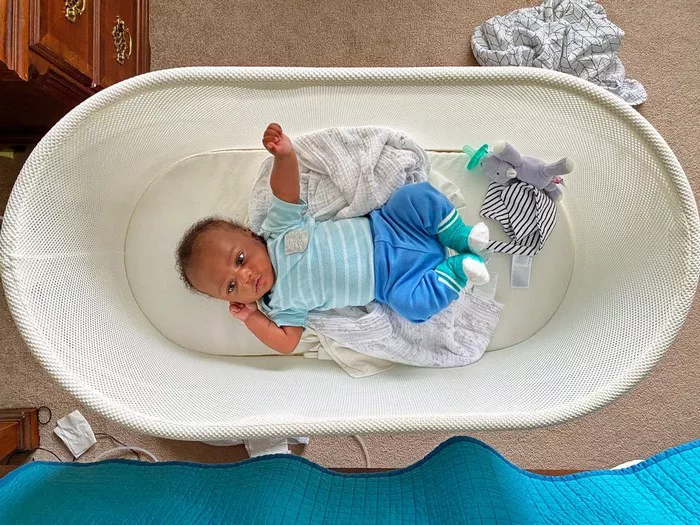Welcoming a newborn into the world is an exciting and joyous occasion, accompanied by a myriad of preparations. Among these preparations, choosing the right clothing size for your newborn is crucial. As a parent, it’s natural to want your little one to be comfortable and snug in their attire. However, with the array of clothing sizes available, it can be overwhelming to determine which size will best suit your baby’s needs. In this comprehensive guide, we’ll delve into everything you need to know about newborn clothing sizes, helping you make informed decisions and ensuring your baby’s wardrobe is both practical and adorable.
Understanding Newborn Clothing Sizes
Before delving into specifics, it’s essential to understand the basics of newborn clothing sizes. Unlike adult clothing, which typically follows standard measurements such as small, medium, and large, newborn clothing sizes are categorized based on the baby’s age, weight, and sometimes height. These sizes are typically labeled as preemie, newborn, 0-3 months, 3-6 months, and so forth.
1. Preemie: Preemie sizes are designed for premature babies or newborns who are smaller and lighter than average. These sizes are specially tailored to accommodate the unique needs of premature infants, offering a snug and comfortable fit without overwhelming their delicate frame.
2. Newborn: Newborn sizes are intended for babies who are born at full term or slightly premature. These sizes are suitable for infants weighing between 5 to 8 pounds and are designed to provide a cozy and snug fit during the first few weeks of life.
3. 0-3 Months: As the name suggests, 0-3 months sizes are suitable for infants from birth to approximately three months old. These sizes offer a bit more room for growth compared to newborn sizes, accommodating babies as they begin to gain weight and grow in length.
4. 3-6 Months and Beyond: As your baby continues to grow, you’ll transition to larger sizes such as 3-6 months, 6-9 months, and so on. These sizes provide ample room for movement and growth, ensuring your little one stays comfortable and stylish as they reach various developmental milestones.
Factors to Consider When Choosing Newborn Clothing Sizes
While understanding the different clothing sizes is essential, several factors should be taken into account when selecting attire for your newborn:
1. Weight and Length: Pay close attention to your baby’s weight and length when choosing clothing sizes. Most newborn clothing labels provide weight and height guidelines to help you make an informed decision. Additionally, consider your baby’s proportions, as some may have longer torsos or shorter legs.
2. Season and Climate: Consider the season and climate when selecting newborn clothing. Opt for lightweight, breathable fabrics such as cotton during warmer months to prevent overheating, while choosing thicker materials like fleece or wool for colder seasons to keep your baby warm and cozy.
3. Diaper Access: Look for clothing with convenient diaper access, such as snaps or elastic waistbands, to simplify diaper changes. Avoid outfits with complicated buttons or zippers, as they can be cumbersome during frequent diaper changes, especially for newborns.
4. Comfort and Flexibility: Prioritize comfort and flexibility when choosing newborn clothing. Opt for soft, stretchy fabrics that won’t irritate your baby’s delicate skin and allow for unrestricted movement. Avoid clothing with scratchy tags or seams that may cause discomfort.
5. Versatility: Choose versatile clothing pieces that can easily mix and match to create various outfits. Look for items such as onesies, leggings, and sleepers that can be layered for added warmth or worn alone during warmer weather.
Tips for Shopping for Newborn Clothing
Shopping for newborn clothing can be an enjoyable experience, but it’s essential to keep these tips in mind to ensure you make the best choices for your little one:
1. Start with Basics: Begin by stocking up on essential clothing items such as onesies, sleepers, and socks. These basic pieces serve as the foundation of your baby’s wardrobe and can be mixed and matched with other items.
2. Consider Growth Spurts: Keep in mind that babies grow rapidly during the first year of life. When purchasing clothing, consider buying a size larger to accommodate potential growth spurts and ensure longevity.
3. Check for Safety Features: Inspect clothing items for safety features such as secure closures, non-toxic materials, and flame-resistant fabrics. Avoid clothing with small buttons or embellishments that could pose a choking hazard.
4. Prioritize Quality Over Quantity: Invest in high-quality clothing made from durable materials that can withstand frequent washing and wear. While it may be tempting to purchase a large quantity of inexpensive clothing, investing in quality pieces will save you money in the long run and ensure your baby’s comfort.
5. Wash Before Wear: Wash all newborn clothing items before your baby wears them to remove any residual chemicals or irritants. Use a gentle, fragrance-free detergent to minimize the risk of skin irritation.
Conclusion
Choosing the right clothing size for your newborn is an essential aspect of parenting that requires careful consideration. By understanding the different clothing sizes available, considering various factors such as weight, length, and climate, and following practical tips for shopping, you can ensure your baby stays comfortable, stylish, and safe in their attire. Remember, every baby is unique, so don’t be afraid to experiment with different sizes and styles until you find what works best for your little one. With the right approach, you’ll be well-equipped to navigate the world of newborn fashion with confidence and ease.


